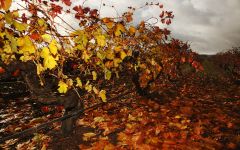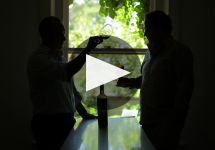Elderton E Series Shiraz-Cabernet Sauvignon 2017
-
Wine
Spectator -
James
Suckling



Product Details
Your Rating
Somm Note
Winemaker Notes
Deep purple in color. Aromas of plum, cherry, and cassis. On the palate notes of plum, cherry, cassis and hints of vanilla. Mid to full bodied, classic Australian blend. E is for excellence, it is for excitement, evolution, epicure, elegance and euphoria. E is for earth. E is for Elderton. Embrace and enjoy.
Professional Ratings
-
Wine Spectator
Fragrant and expressive, showing a mix of Earl Grey tea, freshly cracked black pepper, tobacco and dried sage accents around a core of blackberry, huckleberry and plum compote notes, with firm, muscular tannins. Shiraz and Cabernet Sauvignon. Drink now through 2030.
-
James Suckling
Plenty of rich dark berries and a leafy, cabernet edge on the nose here. The palate is very balanced and has fresh dark berries at its core. A blend of shiraz and cabernet sauvignon.
Other Vintages
2016-
James
Suckling
-
Robert
Parker






After time spent working in Saudi Arabia, Neil and Lorraine Ashmead, moved to the Barossa in 1979, after Lorraine’s father identified a beautiful home with potential. The Ashmeads believed this would be a great place to raise their family. The homestead, in the heart of the township of Nuriootpa, was surrounded by extremely old Shiraz and Cabernet Sauvignon vines. At a time where demand for Australian table wine was negligible, the vineyard had become derelict. After years of no interest, the real estate agent eventually offered the Ashmeads the 72 acre vineyard as a bonus, as part of the sale of the homestead. Three years later, after restoring the vineyard, Elderton Wines was born.
The second generation, Cameron and Allister, took the reins of the business in 2003 and today work together to run Elderton Wines, with Lorraine still involved through her role on the Board. Cameron and Allister believe very strongly in continuing the traditions that began a generation earlier, on the Nuriootpa vineyard. Wanting to take the family company to the next level, they together devised a plan to buy great vineyards in other significant sub appellations of the Barossa. Through using sustainable practices, the hope is that the next generation of the Ashmead family have a lot to work with when they are at the helm.

With hundreds of red grape varieties to choose from, winemakers have the freedom to create a virtually endless assortment of blended red wines. In many European regions, strict laws are in place determining the set of varieties that may be used, but in the New World, experimentation is permitted and encouraged resulting in a wide variety of red wine styles. Blending can be utilized to enhance balance or create complexity, lending different layers of flavors and aromas. For example, a red wine blend variety that creates a fruity and full-bodied wine would do well combined with one that is naturally high in acidity and tannins. Sometimes small amounts of a particular variety are added to boost color or aromatics. Blending can take place before or after fermentation, with the latter, more popular option giving more control to the winemaker over the final qualities of the wine.
How to Serve Red Wine
A common piece of advice is to serve red wine at “room temperature,” but this suggestion is imprecise. After all, room temperature in January is likely to be quite different than in August, even considering the possible effect of central heating and air conditioning systems. The proper temperature to aim for is 55° F to 60° F for lighter-bodied reds and 60° F to 65° F for fuller-bodied wines.
How Long Does Red Wine Last?
Once opened and re-corked, a bottle stored in a cool, dark environment (like your fridge) will stay fresh and nicely drinkable for a day or two. There are products available that can extend that period by a couple of days. As for unopened bottles, optimal storage means keeping them on their sides in a moderately humid environment at about 57° F. Red wines stored in this manner will stay good – and possibly improve – for anywhere from one year to multiple decades. Assessing how long to hold on to a bottle is a complicated science. If you are planning long-term storage of your reds, seek the advice of a wine professional.

The Barossa Zone encompasses the Barossa Valley and Eden Valley. Some of the oldest vines in Australia can be found here.
Barossa Valley of course is the most important and famous wine growing region in all of Australia where 140+ year-old, dry-farmed Shiraz vines still produce inky, purple and dense juice for some of Australia's best wines.
In the cooler, wetter Eden Valley sub-region, the Hill of Grace vineyard is home to famous Shiraz vines from the 1800s but the region produces also some of Australia’s very best and age-worthy Rieslings.
